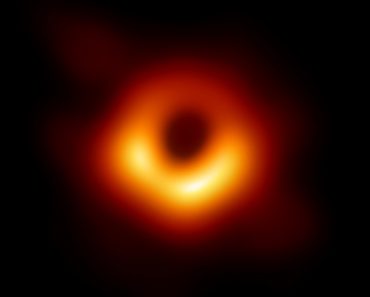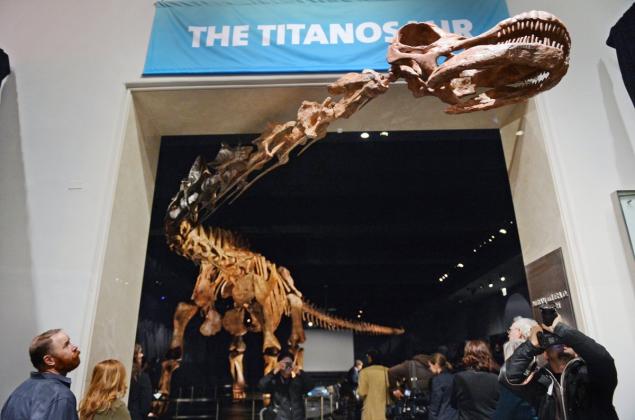
Photo from New York Daily News
The largest dinosaur ever discovered is taking over the Big Apple.
A 122-foot-long replica of a newly-discovered titanosaur is on display at the American Museum of Natural History. The display is so big, it can’t even fit in the gallery space. Its 39-foot neck stretches across the passageway as it awes visitors.
Scientists predict this giant herbivore weighed about 70 tons, or the mass of 10 African elephants – the heaviest animals walking on land today.
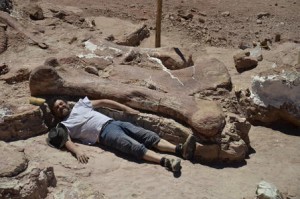
Photo from CNN.com
They estimate it roamed the Patagonia forest in Argentina more than 100 million years ago. Its fossils were discovered in the now dessert region in 2014 by a team from the Museo Paleontologico Egidio Feruglio. The crew led by José Luis Carballido and Diego Pol was tipped by a local rancher who discovered something odd one day in 2012.
He noticed a piece of bone sticking out of his property near La Flecha. Excited by recent news of dinosaur discoveries throughout the country, he went to a local museum and asked that someone come take a look.
Pol and his team then spent the next 18 months excavating about 223 fossils belonging to six dinosaurs from the same newly-discovered species.
“This animal is so new it doesn’t even have an official species name yet,” said museum curator Mark Norell, in an interview with CNN.
Because of the fossils’ lizard-like features, scientists categorized them under the titanosaur family.
Although it didn’t hunt for food, the titanosaur was no pushover. Other dinosaurs that shared the earth with these creatures would be hard-pressed to get in their way. Armed with a massively long neck and a whip-like tail, the titanosaur that was replicated could have stood up to 20 feet—and it was still growing when it died.
“There were some predators which were about the size of T. Rex, but it’s doubtful that they would’ve had any predators,” Norell told reporters during an exhibit preview for the press in January.
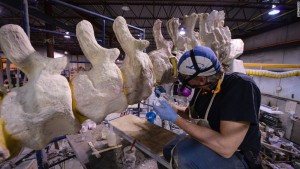
Photo from CNN.com
But how much did these creatures have to eat to sustain their behemoth size? Norell told Popular Science he suspects they ate “maybe a thousand pounds of food a day. At least 500.”
This got Pol excited.
“That’s when we realized this was a once-in-a-lifetime discovery,” Pol told the New York Times. “Dinosaurs are the big game to fossil hunters, and these were some of the biggest plant-eating dinosaurs ever found.”
The crew estimates the titanosaurs they discovered died off in three distinct periods, which scientists are still learning more about.
“Titanosaur fossils have been unearthed on every continent, and an abundance of discoveries in recent years has helped us appreciate the deep diversity of this group,” said the museum’s senior vice president Michael Novacek, in a statement.
A thigh bone alone weighs about 1,000 pounds, making it virtually impossible to mount a model using original fossils. In fact, trucks and bulldozers were brought into the excavation site to move the massive bones around.
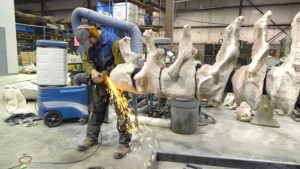
Photo from New York Daily News.
The hollow cast was built over the course of six months before being filled with steel structures and assembled at the museum.
“Paleontology has become less geological and more biological in the last 20 years or so,” Norell said in a statement. “Our access to advanced and extremely precise scientific tools like CT scanners and other x-ray imaging techniques let us ask questions beyond ‘what species is this and when did it die?’ Now we can look at complex topics like the evolution of dinosaur brains and the presence and color of dinosaur feathers.”
An 8-foot-femur or thigh bone will be on temporary display with the titanosaur replica along with four other original fossil bones.
The titanosaur exhibit marks the first time the display has been presented to the public.
The mighty titanosaur replica is scheduled to be on display until 2020.
It occupies the museum’s Wallach Orientation center on the fourth floor. The museum serves as a walk-in time machine where visitors can also feast their eyes on giants like the Tyrannosaurs Rex skeleton.
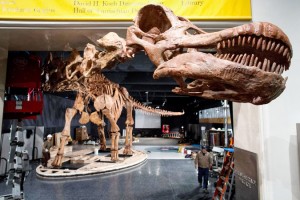
Photo from the New York Times.
“We are pleased to present this awe-inspiring exhibit as yet another icon in an inspiring journey of discovery that the museum offers throughout its galleries,” said American Museum of Natural History President Ellen Futter, in a statement. “While the titanosaur itself is ancient, it nevertheless embodies and reflects the very modern, dynamic and thrilling state of paleontology today.”
The opening of the titanosaur exhibit kicked off a special year that puts the spotlight on the latest discoveries in paleontology. For the rest of the year, the museum will feature new exhibits, symposiums, and multi-media presentations.
“This thrilling display dramatically brings the public one of the latest and largest discoveries in paleontology, a field that is experiencing rapid advancement right now, and one of the longstanding expertises for this museum,” Futter said.
Dinosaurs Among Us, which opens March 2016, will explore how a group of dinosaurs evolved into birds we see today.
Although the titanosaur species accounts for the largest dinosaurs ever discovered, Pol has no doubt the field of paleontology eventually will see giants that would dwarf this creature.
“Every time we find the biggest dinosaur, we soon find a bigger one in the next dig,” he told the New York Times.
The museum’s Division of Paleontology houses one of the world’s largest and most diverse collections of its kind with more than 6 million specimens. 5 million of these are fossil invertebrates and about 1 million are fossil vertebrates. The collection comes together through more than a century of expeditions, which continue today. Since 1990, curators Michael Novaceck and Mark Norell have led expeditions and conducted annual fieldwork in some of the richest fossil localities in the world.





